This Spotlight post is highlighting Japanese language and culture in our collections! Peruse our diverse list featuring: Japanese language novels, graphic novels, and early reader books, translated Japanese fiction, Japanese cookbooks, and books on Japanese culture and arts. Please check out our companion post on Japanese DVDs in our Media Collection and visit our table display in Howe Library Lobby to find even more books and resources on Japanese courses, clubs, and events at UVM!

All the lovers in the night by Mieko Kawakami ; translated from the Japanese by Sam Bett and David Boyd
Fuyuko Irie is a freelance copy editor in her mid-thirties. Working and living alone in a city where it is not easy to form new relationships, she has little regular contact with anyone other than her editor, Hijiri, a woman of the same age but with a very different disposition. When Fuyoku stops one day on a Tokyo street and notices her reflection in a storefront window, what she sees is a drab, awkward, and spiritless woman who has lacked the strength to change her life and decides to do something about it. As the long overdue change occurs, however, painful episodes from Fuyuko's past surface and her behavior slips further and further beyond the pale. All the Lovers in the Night is acute and insightful, entertaining and engaging; it will make readers laugh, and it will make them cry, but it will also remind them, as only the best books do, that sometimes the pain is worth it.

Introduction to Japanese cuisine : nature, history and culture by Japanese Culinary Academy
INTRODUCTION TO JAPANESE CUISINE is the first in definitive multi-volume series. Created by the renowned Japanese Culinary Academy, an organization dedicated to advancing Japanese cuisine throughout the world, the series is authoritative, comprehensive, and wide-ranging in scope. The writing, design, and photography of each volume meet the highest standards. And although the books are targeted primarily to a professional readership, serious amateur chefs will also find them to be an invaluable resource.

めしあがれ : 食文化で学ぶ上級日本語 = Meshiagare : a culinary journey through advanced Japanese by Hatasa Kazumi, Fukutome Nami cho
Explore Japanese Food Culture from traditional cuisine to B-class gourmet. Bilingual edition for both English and Japanese learners. Simple and tasty Recipes in each chapter.

A history of popular culture in Japan : from the seventeenth century to the present by E. Taylor Atkins
The phenomenon of 'Cool Japan' is one of the distinctive features of global popular culture of the millennial age. A History of Popular Culture in Japan provides the first historical and analytical overview of popular culture in Japan from its origins in the 17th century to the present day, using it to explore broader themes of conflict, power and meaning in Japanese history. E. Taylor Atkins shows how Japan was one of the earliest sites for the development of mass-produced, market-oriented cultural products consumed by urban middle and working classes. From traditional monochrome ink painting, court literature and poetry to anime, manga and J-Pop, popular culture was pivotal in the rise of Japanese nationalism, imperialism, militarism and economic development, and to the present day plays a central role in Japanese identity. With updated historiography throughout, this fully revised second edition features: - A new chapter on popular culture in the Edo period - An expanded section on pre-Tokugawa culture - More discussion on recent pop culture phenomena such as TV game shows, cuteness and J-Pop - 10 new images - A new glossary of terms including kanji. This improved edition is a vital resource for students of Japanese cultural history wishing to gain a deeper understanding of Japan's contributions to global cultural heritage.
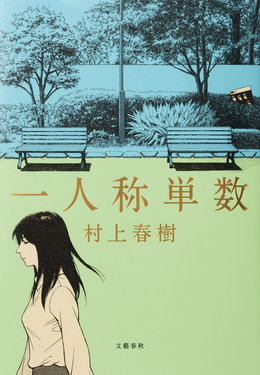
一人称単数 Ichininshō tans by Haruki Murakami
「一人称単数」とは世界のひとかけらを切り取る「単眼」のことだ。しかしその切り口が増えていけばいくほど、「単眼」はきりなく絡み合った「複眼」となる。そしてそこでは、私はもう私でなくなり、僕はもう僕でなくなっていく。そして、そう、あなたはもうあなたでなくなっていく。そこで何が起こり、何が起こらなかったのか? 「一人称単数」の世界にようこそ
translation: A mind-bending new collection of short stories from the internationally acclaimed, Haruki Murakami. The eight stories in this new book are all told in the first person by a classic Murakami narrator. From memories of youth, meditations on music, and an ardent love of baseball, to dreamlike scenarios and invented jazz albums, together these stories challenge the boundaries between our minds and the exterior world. Occasionally, a narrator may or may not be Murakami himself. Is it memoir or fiction? The reader decides.

Taiko Boom : Japanese Drumming in Place and Motion by Shawn Bender - EBOOK
With its thunderous sounds and dazzling choreography, Japanese taiko drumming has captivated audiences in Japan and across the world, making it one of the most successful performing arts to emerge from Japan in the past century. Based on ethnographic fieldwork conducted among taiko groups in Japan, Taiko Boom explores the origins of taiko in the early postwar period and its popularization over the following decades of rapid economic growth in Japan's cities and countryside. Building on the insights of globalization studies, the book argues that taiko developed within and has come to express new forms of communal association in a Japan increasingly engaged with global cultural flows. While its popularity has created new opportunities for Japanese to participate in community life, this study also reveals how the discourses and practices of taiko drummers dramatize tensions inherent in Japanese conceptions of race, the body, gender, authenticity, and locality.

ちこくのりゆう Chikoku no riyū by Morikumadō saku ; Kitamura Yūka e
先生、きいてえな。朝おきたら、とうちゃんとかあちゃんがカブトムシにかわっとったんや。だけど時計を見たら学校がはじまる時間やったから、いってきますと、ぼくはうちをとびだしてん。ところが、ノラネコのタイショーに声をかけられて、そのとたん…… ちこくのりゆうを先生に説明する体ではじまる物語は、ページをめくるたび度肝をぬかれる抱腹絶倒の展開をしていきます。第9回絵本テキスト大賞受賞のナンセンス絵本です!
translation: Teacher, I want to hear it. When I woke up in the morning, Mom and Dad had turned into rhinoceros beetles. But when I looked at the clock, I saw that it was time for school to start, so I said "good morning" and ran out the door. But then, a stray cat named Taisho called out to me, and the moment he did...The story begins with him explaining the reason for the country to the teacher, and with each page that turns, the story unfolds in a hilarious way that will blow your mind. This is a nonsense picture book that won the 9th Picture Book Textbook Grand Prize!
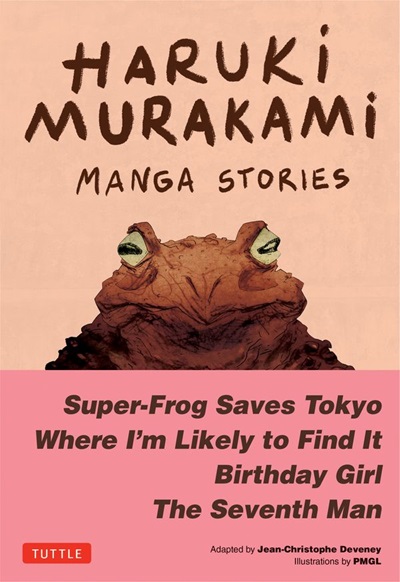
Haruki Murakami manga stories by Jean-Christophe Deveney – EBOOK
Haruki Murakami's novels, essays and short stories have sold millions of copies worldwide and been translated into dozens of languages. Now for the first time, many of Murakami's best-loved short stories are available in graphic novel form in English. Haruki Murakami Manga Stories is one of three short story compilations, which present a total of 9 short stories from Murakami's bestselling collections.
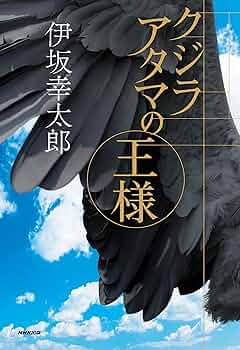
クジラアタマの王様 Kujiraatama no ōsama by Isaka Kōtarō
製菓会社に寄せられた一本のクレーム電話。広報部員・岸はその事後対応をすればよい...はずだった。訪ねてきた男の存在によって、岸の日常は思いもよらない事態へと一気に加速していく。不可思議な感覚、人々の集まる広場、巨獣、投げる矢、動かない鳥。打ち勝つべき現実とは、いったい何か。巧みな仕掛けと、エンターテインメントの王道を貫いたストーリーによって、伊坂幸太郎の小說が新たな魅力を放つ。
translation: A complaint call was made to a confectionery company. Kishi, the public relations staff member, should have been able to deal with the situation after the fact. Due to the presence of the man who came to visit, Kishi's daily life suddenly accelerates into an unexpected situation. Mysterious sensations, open spaces where people gather, huge beasts, arrows being thrown, birds that don't move. What is the reality that we must overcome? Kotaro Isaka's short poems have a new appeal thanks to their clever gimmicks and stories that follow the standard of entertainment.
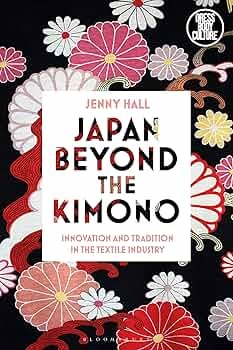
Japan beyond the kimono : innovation and tradition in the Kyoto textile industry by Jenny Hall
In the ancient city of Kyoto, contemporary artisans and designers are using heritage techniques and traditional clothing aesthetics to reinvent wafuku (Japanese clothing, including kimono) for modern life. Japan Beyond the Kimono explores these shifts, highlighting developments in the Kyoto fashion industry such as its integration of digital weaving and printing techniques and the influence of social media on fashion distribution systems. Through case studies of designers, artisans, and retailers, Jenny Hall provides a comprehensive picture of the reasons behind the production and consumption of these rejuvenated fashion goods. She argues that conceptualisations of Japanese tradition include innovation and change, which is vital to understanding how Japanese cultural heritage is both sustained and evolving. Essential reading for students and scholars of fashion, anthropology, and Japanese studies, Jenny Hall's sensory ethnography is the first of its kind, describing the lived experiences of people in the Kyoto textiles industry, explaining the renewal of traditional techniques and styles, and placing them both within contexts such as transnational 'craftscapes' and fast or slow fashion systems.
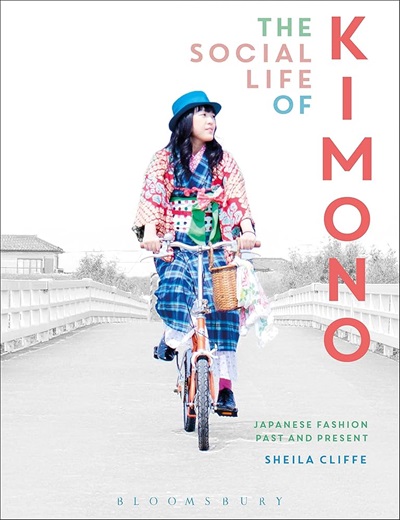
The social life of kimono : Japanese fashion past and present by Sheila Cliffe
The kimono is an iconic garment with a history as rich and colourful as the textiles from which it is crafted. Deeply associated with Japanese culture both past and present, it has often been thought of as a highly gendered, rigidly traditional and unchanging national costume. This book challenges that perception, revealing the nuanced meanings and messages behind the kimono from the point of view of its wearers and producers, many of whom - both men and women - see the garment as a vehicle for self-expression. Taking a material culture approach, The Social Life of Kimono is the first study to combine the history of the kimono as a fashionable garment with an in-depth exploration of its multifaceted role today on both the street and the catwalk. Through case studies covering historical advertising campaigns, fashion magazines, interviews with contemporary kimono designers, large scale and small craft producers, and consumers who choose to wear them, The Social Life of Kimono gives a unique insight into making and meaning of this complex garment.
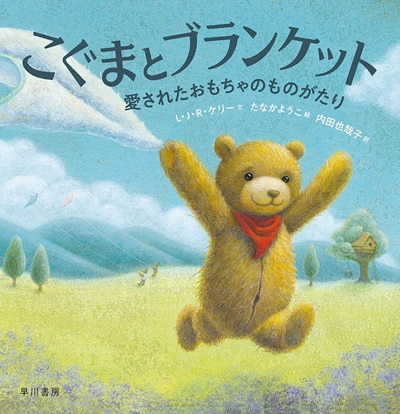
こぐまとブランケット : 愛されたおもちゃのものがたり Koguma to buranketto : aisareta omocha no monogatari by Tanaka Yōko; Kelly L.J.R.; Uchida Yayako
少年が最愛の毛布とクマを失ったとき、彼らは彼の元に戻るために長い距離を旅します。
When a boy loses his beloved blanket and bear, they travel a great distance to make their way back to him.
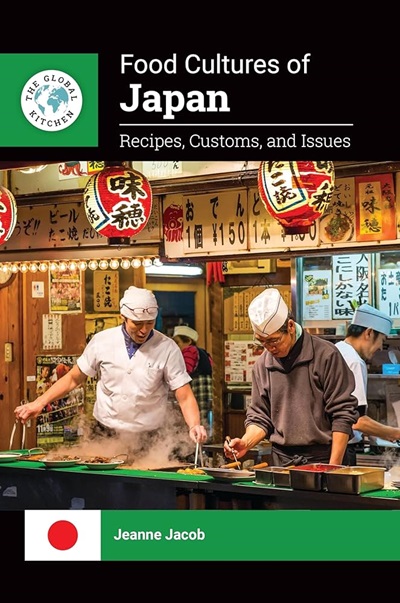
Food cultures of Japan by Jeanne Jacob – EBOOK
This addition to the Global Kitchen series explores the cuisine of Japan, from culinary history and important ingredients to essential daily and special meals. When we think of Japanese food in the United States, certain images come to mind: sushi, ramen, and hibachi restaurants. But what is food like in this island nation? What do people eat and drink every day? Are food concerns similar to those in the United States, where obesity is a major issue? This volume offers comprehensive coverage on the cuisine of Japan. Readers will learn about the history of food in the country, influential ingredients that play an important role in daily cooking and consumption, meals and dishes for every occasion, and what food is like when dining out or stopping for snacks from street vendors. An additional chapter examines food issues and dietary concerns. Recipes accompany every chapter. A chronology, glossary, sidebars, and bibliography round out the work.
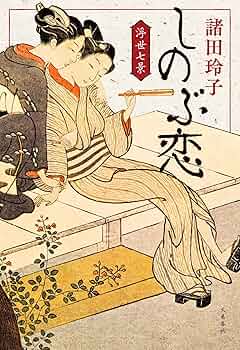
しのぶ恋 : 浮世七景 Shinobu koi : ukiyo nanakei by Morota Reiko
時代小説の名手・諸田玲子が、浮世絵の名作に材を取って、紡いだ極上の短篇七本。
translation: Morota Reiko, a master of historical fiction, has woven seven exquisite short stories from masterpieces of ukiyo-e.
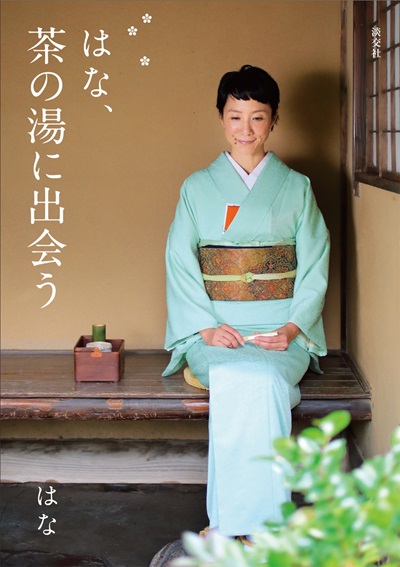
はな, 茶の湯に出会う Hana chanoyu ni deau by Hana
敷居が高くて堅苦しいと思われがちな茶道。でもその本質は'おもてなしの心' です。丁寧な振る舞いや相手への気遣い、お道具や料理、そして一服のお茶。そのすべてが「お客様に楽しんでもらう」ためのエッセンス。茶道は「想いをカタチにする」多くの分野でできています。この書籍は、幅広いジャンルで活躍するモデルのはなさんが、茶道を構成する各分野のプロフェッショナルとの対談や実際の体験を通して、日本文化の奥深さを読者にお届けする一冊です。また、はなさん自身が茶道を学び感じたことを綴るエッセイ「はなのお茶日記」も掲載。茶道を学んでいる人も、そうでない人も、きっと自分の知らなかった日本を知ることができますよ。
translation: Tea ceremony is often thought of as being high-brow and formal. But its essence is the 'spirit of hospitality'. Polite behavior, consideration for others, utensils, food, and a cup of tea. All of these are the essence of "making customers enjoy themselves". Tea ceremony is made up of many fields that "give shape to thoughts". This book is a book in which Hana, a model who is active in a wide range of genres, delivers the depth of Japanese culture to readers through conversations with professionals in each field that makes up tea ceremony and actual experiences. It also includes an essay "Hana's Tea Diary" in which Hana writes about what she herself learned and felt about tea ceremony. Whether you are studying tea ceremony or not, you will surely be able to learn about a Japan you never knew before.

Japanese soul cooking ramen, tonkatsu, tempura, and more from the streets and kitchens of tokyo and beyond by Tadash Ono - EBOOK
A collection of more than 100 recipes that introduces Japanese comfort food to American home cooks, exploring new ingredients, techniques, and the surprising origins of popular dishes like gyoza and tempura. Japanese food is often thought of as precise, austere, and time-consuming. But along with the high (kaiseki and tea ceremony) there is also the low (food carts and fried chicken). Through recipes, fascinating narrative, and lush location photography, Tadashi Ono and Harris Salat explore Japan's long history of homey fare, which has now firmly taken root in the US. Some of the dishes are already loved here, like ramen, soba, tempura, and gyoza, but others, like Japanese-style fried chicken, rice bowls and okonomiyaki, and savory pancakes, will be deliciously delightful surprises, perfect for a weeknight meal or weekend entertaining.
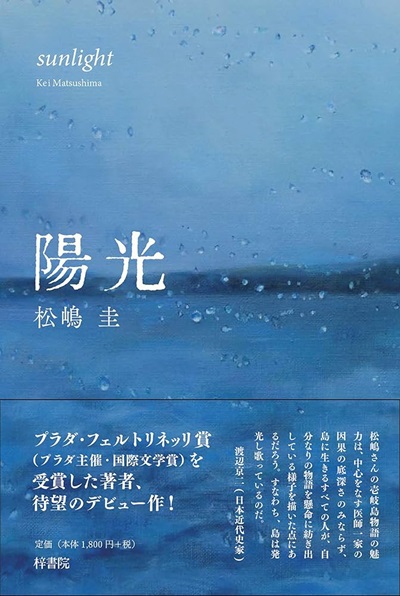
陽光 Yōkō by Matsushima Kei
壱岐島で暮らす、ごくごく普通の人々。しかし、その誰もが語るべき物語を持っている。「医師の家」の運命に翻弄される人と、一家をとりまく人々。フィリピンからやって来た一人の女性の淡い恋の記憶。軍人の父を持つ少女の強く、美しい生き様。島に暮らす人々に残る戦争の記憶...。島の空気、懸命に自分の物語を紡ごうとする人々の力強さ、はかなさ、愛おしさ。すべてが溶け合い、ひとつの歌を紡いでいく。プラダ・フェルトリネッリ賞(プラダ主催・国際文学賞)を受賞した著者、待望のデビュー作!
translation: The people who live on Iki Island are very ordinary. But each one of them has a story to tell. Those at the mercy of the fate of the "Doctor's House" and those surrounding the family. The memories of a tender love of a woman who came from the Philippines. The strong and beautiful way of life of a girl whose father is a soldier. Memories of war that remain among the people who live on the island... The atmosphere of the island, the strength, transience and loveliness of the people who try so hard to weave their own stories. All of this blends together to weave a single song. This is the long-awaited debut work from the Prada Feltrinelli Prize (an international literary award sponsored by Prada)-winning author!
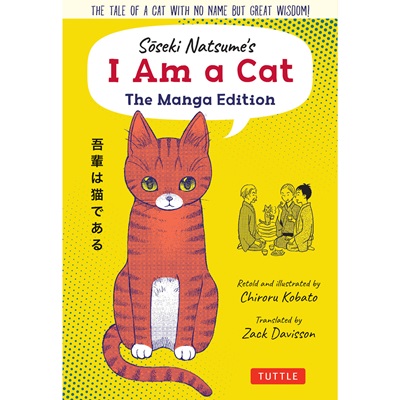
Sōseki Natsume's I am a cat retold and illustrated by Chiroru Kobato ; translated by Zack Davisson
Japan's beloved literary masterpiece brought to life in manga form! Soseki Natsume's comic masterpiece, I Am a Cat, satirizes the foolishness of upper-middle-class Japanese society in early 20th century Tokyo. Written with biting wit and sardonic perspective, it follows the whimsical adventures of a rather cynical stray kitten. He finds his way into the home of an English teacher, where his running commentary on the follies and foibles of the people around him has been making readers laugh for more than a century.This is the very first manga edition in English of this classic piece of Japanese literature. The story lends itself well to a graphic novel format, allowing readers to pick up on the more subtle cues of the expressive cat, while also being immersed in the world of his perceptive narration. It is true to classic manga form, and is read back to front. The cast of characters includes: Kushami--His master, who is not good at his job and quite stupid; The Kenedas--A conceited couple with a spoiled daughter; Meitei--Kushami's friend who is fond of jokes and tall tales; A group of local cats including lovely Mikeko, and violent Kuro. Beautifully illustrated by Japanese artist Chiroru Kobato, this edition provides a visual, entertaining look at a unique period in Japan's history--filled with cultural and societal changes, rapid modernization and a feeling of limitless possibility--through the eyes of an unlikely narrator.
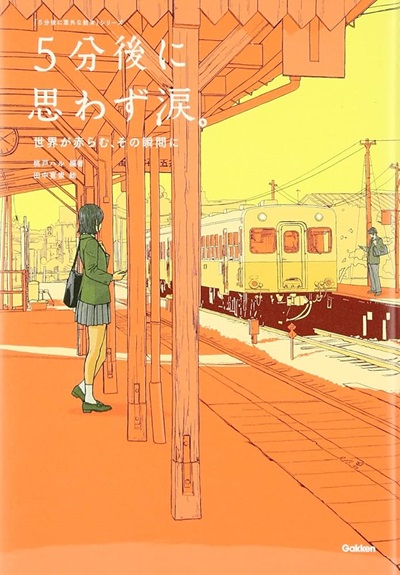
5分後に思わず涙. 世界が赤らむ, その瞬間に 5-fungo ni omowazu namida. Sekai ga akaramu, sono shunkan ni by Momoto Haru hencho ; Tanaka Hirotaka e
累計90万部を突破の超人気シリーズの「涙」バージョン。嬉し泣き、悔し泣き、もらい涙、ほろっと涙、慟哭…。さまざまな形の涙の物語を新収録。ただし、涙だけでは終わらない。最後にぞっとする話など、全編、「意外な結末」を保証!
translation: This is the "tears" version of the super popular series that has sold over 900,000 copies. Tears of joy, tears of regret, tears of sympathy, tears of sadness, grief... Newly collected stories that will make you cry in all different ways. However, it doesn't end with tears alone. There is a story that will leave you shuddering at the end, and the whole story is guaranteed to have an "unexpected ending"!
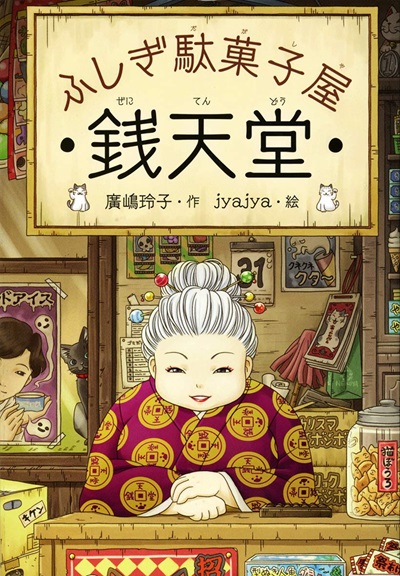
ふしぎ駄菓子屋銭天堂. Fushigi dagashiya Zenitendō. [1] by Reiko Hiroshima
幸運な人だけがたどりつける、ふしぎな駄菓子屋。そこにはたくさんの魅惑の駄菓子が並ぶ。女主人・紅子がすすめる駄菓子は、どれもその人にぴったりのもの。でも、食べ方や使い方をまちがえると......。はたしてその駄菓子は、幸福を呼ぶか? はたまた不幸をまねくか......?
translation: A mysterious candy shop that only lucky people can find. There are many fascinating sweets lined up there. The sweets recommended by the hostess, Beniko, are all perfect for each person. However, if you eat or use it incorrectly... Will the candy bring happiness? Will it cause misfortune...?

Color engineering by Yuichi Yoyama
Comic artist Yuichi Yokoyama (born 1967) draws wordless narratives of scenarios that verge on visual abstraction. Stripped of any detail that might orient them in the past, present or future, they record the self-determined activities of machines and architectural structures in a pre- or post-human universe. With his fourth volume for PictureBox, designed and edited by the artist himself, Yokoyama broaches significant new terrain: color! Color Engineering reproduces both older and unseen imagery from the 2000s with dozens of color drawings and paintings that were executed in 2010 during a six-week open studio event held in Tokyo, at which the public was able to view Yokoyama at work. A selection of these canvases is reproduced here as gatefold pages, and is integrated among comic-strip sequences executed in a variety of techniques: photography, loose marker drawings, hyper-real portraiture and much more. These sequences continue his investigations into the world of machines, architecture and post-human fashion, and are the first Yokoyama narratives to provide insight into the artist's personal world, in details of his rural habitat.
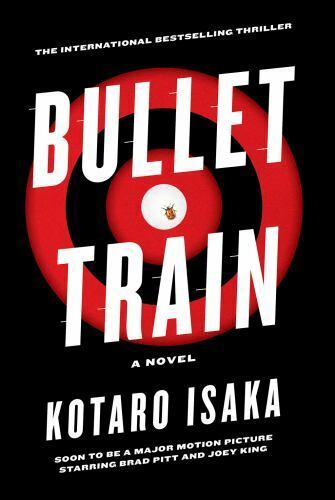
Bullet train : a novel by Kotaro Isaka ; translated from the Japanese by Sam Malissa
Nanao, nicknamed Lady Bird--the self-proclaimed "unluckiest assassin in the world"--Boards a bullet train from Tokyo to Morioka with one simple task: grab a suitcase and get off at the next stop. Unbeknownst to him, the deadly duo Tangerine and Lemon are also after the very same suitcase--and they are not the only dangerous passengers onboard. Satoshi, "the Prince," with the looks of an innocent schoolboy and the mind of a viciously cunning psychopath, is also in the mix and has history with some of the others. Risk fuels him, as does a good philosophical debate ... like, is killing really wrong? Chasing the Prince is another assassin with a score to settle for the time the Prince casually pushed a young boy off of a roof, leaving him comatose. When the five assassins discover they are all on the same train, they realize their missions are not as unrelated as they first appear. A massive bestseller in Japan, Bullet Train is an original and propulsive thriller that fizzes with an incredible energy and surprising humor as its complex net of double-crosses and twists unwind. Award-winning author Kotaro Isaka takes readers on a tension-packed journey as the bullet train hurtles toward its final destination. Who will make it off the train alive--and what awaits them at the last stop?

The Japanese tea ceremony : an introduction by Kaeko Chiba
This book provides a comprehensive introduction to chado, the Japanese tea ceremony. Unlike other books on the subject which focus on practice or historical background or specific issues, this book considers the subject from multiple perspectives. It discusses Japanese aesthetics and philosophy, outlines how the tea ceremony has developed, emphasising its strong links to Zen Buddhism and the impact of other religion influences, and examines how chado reflects traditional gender and social status roles in Japan. It goes on to set out fully the practice of chado, exploring dress, utensils, location - the garden and the tea house - and the tea itself and accompanying sweets. Throughout, the book is illustrated both with images and with examples of practice. The book will be of interest to a wide range of people interested in chado - university professors and students, tourists and people interested in traditional Japanese arts.

Talk to my back by Yamada Murasaki ; translated by Ryan Holmberg
Set in an apartment complex on the outskirts of Tokyo, Murasaki Yamada's Talk to My Back (1981-84) explores the fraying of Japan's suburban middle-class dreams through a woman's relationship with her two daughters as they mature and assert their independence, and with her husband, who works late and sees his wife as little more than a domestic servant.
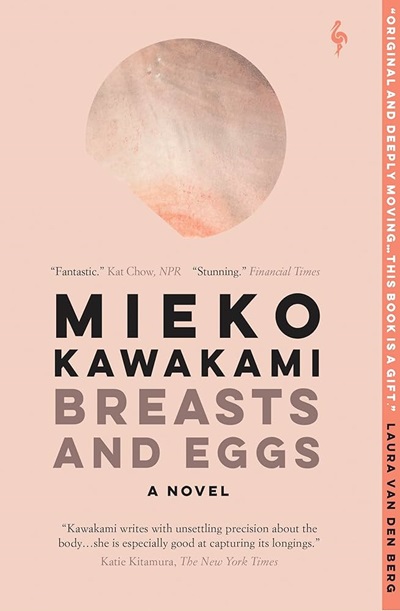
Breasts and eggs by Mieko Kawakami ; translated from the Japanese by Sam Bett and David Boyd
Tells the story of three women: the thirty-year-old unmarried narrator, her older sister Makiko, and Makiko's daughter Midoriko. Unable to come to terms with her changed body after giving birth, Makiko becomes obsessed with the prospect of getting breast enhancement surgery. Meanwhile, her twelve-year-old daughter Midoriko is paralyzed by the fear of her oncoming puberty and finds herself unable to voice the vague, yet overwhelming anxieties associated with growing up. The narrator, who remains unnamed for most of the story, struggles with her own indeterminable identity of being neither a "daughter" nor a "mother." Set over three stiflingly hot days in Tokyo, the book tells of a reunion of sorts between two sisters, and the passage into womanhood of young Midoriko.

First person singular : stories by Haruki Murakami ; translated from the Japanese by Philip Gabriel
A riveting new collection of short stories from the beloved, internationally acclaimed, Haruki Murakami. The eight masterful stories in this new collection are all told in the first person by a classic Murakami narrator: a lonely man. Some of them (like "With the Beatles," "Cream," and "On a Stone Pillow" ) are nostalgic looks back at youth. Others are set in adulthood--"Charlie Parker Plays Bossa Nova," "Carnaval," "Confessions of a Shinagawa Monkey" and the stunning title story. Occasionally, a narrator who may or may not be Haruki himself is present, as in "The Yakult Swallows Poetry Collection." Is it memoir or fiction? The reader decides. The stories all touch beautifully on love and loss, childhood and death . . . all with a signature Murakami twist.

表参道高校合唱部! : 涙の数だけ強くなれるよ Omotesando ko ko gassho bu : namida no kazu dake tsuyoku nareruyo by Kuwahata Kinuko ; Sakurai Tsuyoshi
表東高校に転校してきた主人公・香川真琴は合唱部の一員。しかし、合唱部分が足りず廃番の規模。メンバーは集まるのかな?歌の力で奇跡を起こす青春ストーリー。 TBS系で中高生に人気を博したTVドラマが小説として復活。
translation: Makoto Kagawa, the protagonist who moved to Omotou High School, is part of the choir. However, the choir part is not sufficient and the size of the discontinued. Will the members gather together? A youthful story, where the power of songs will make a miracle. The TV drama, which became popular in middle and high school students from TBS series, is revived as a novel.
